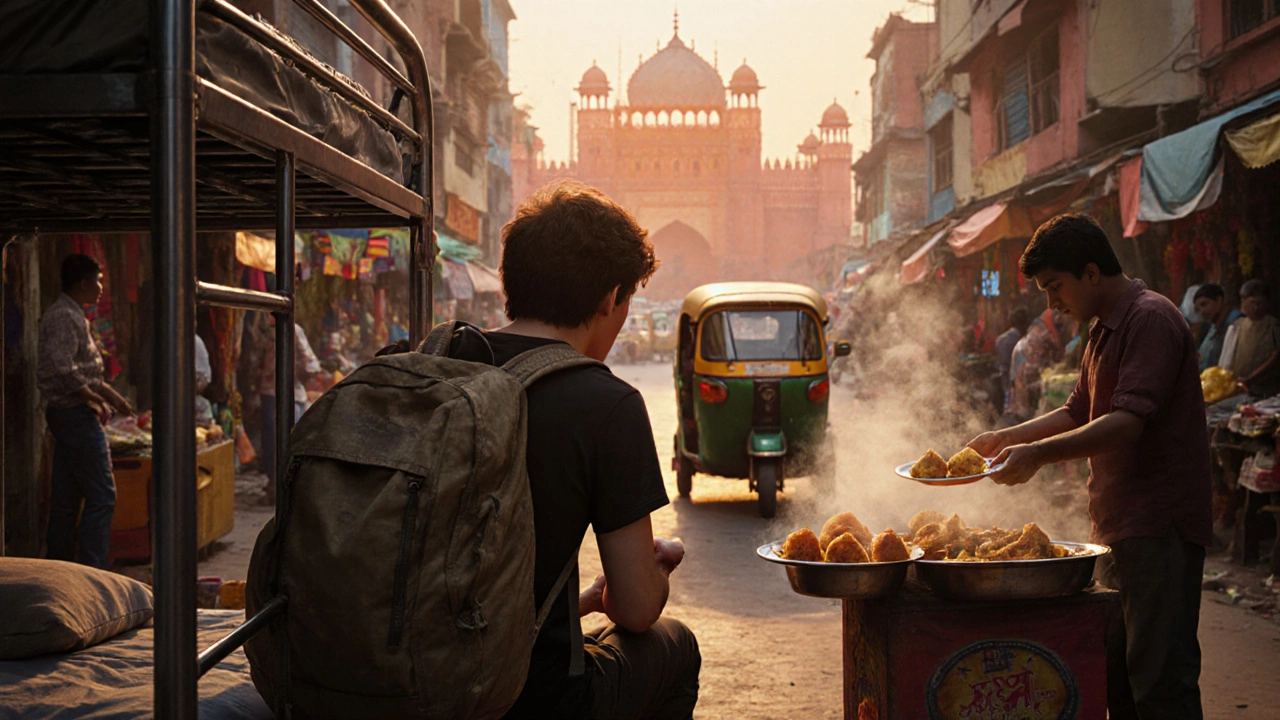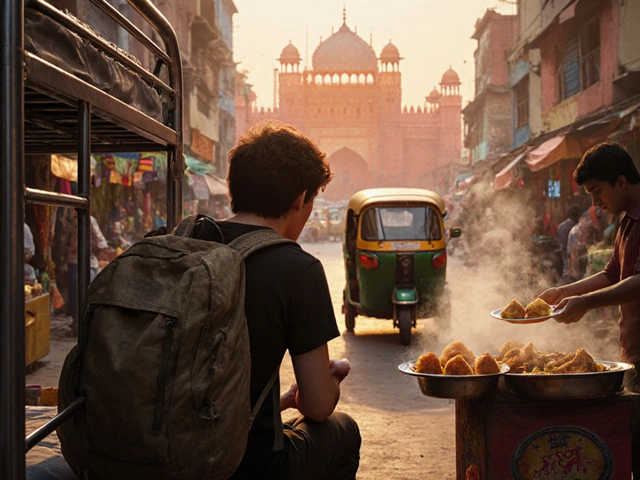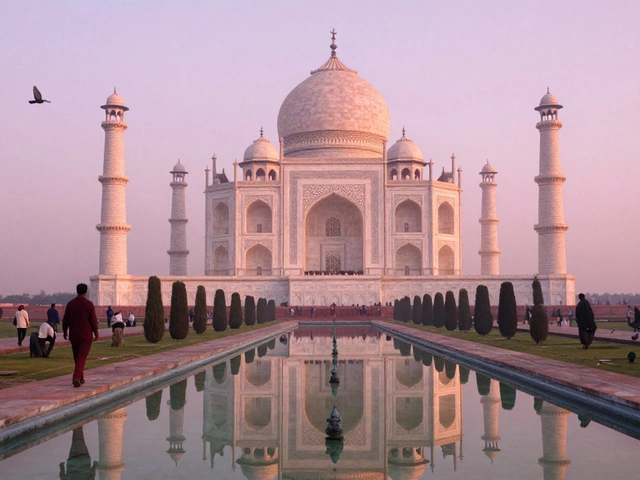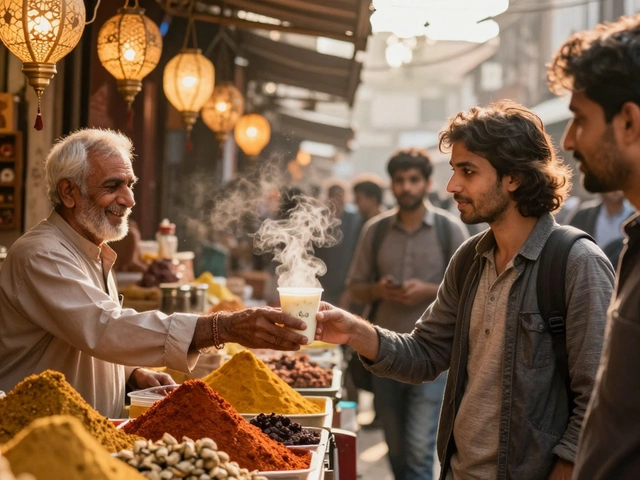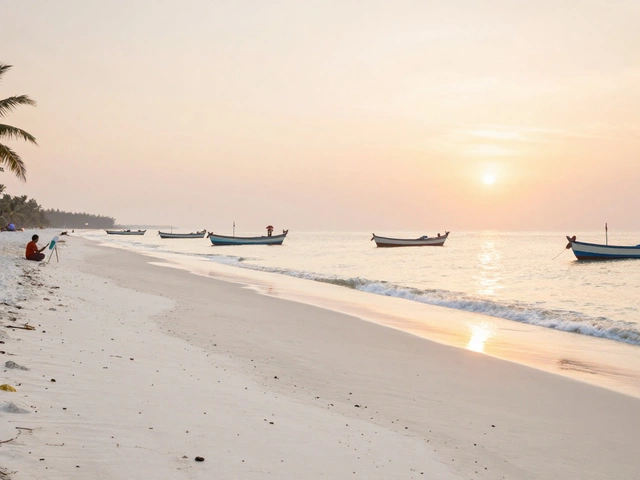India Travel Budget Calculator
Calculate Your India Trip Budget
Quick Takeaways
- Backpackers can get by on $20‑30 USD per day in most Indian cities.
- Mid‑range travelers typically spend $50‑70 USD daily for private rooms and occasional tours.
- Luxury stays push the daily cost above $150 USD, but even 5‑star hotels are cheaper than in many Western capitals.
- Transportation is the biggest variable - trains are $5‑15 USD per long‑distance leg, while domestic flights range $30‑120 USD.
- Season matters: visiting during the off‑peak (Oct‑Mar) slashes accommodation rates by 20‑40 %.
Travelers often wonder whether India is a pricey destination or a budget‑friendly playground. The answer isn’t black‑and‑white - it depends on where you go, how you move, and what kind of experiences you chase. This guide breaks down the real numbers for 2025, compares the major cities, and gives you a step‑by‑step plan to keep the wallet happy while still soaking up the sights.
Understanding the India travel budget Landscape
First, let’s set the stage. The Indian economy uses the Rupee (INR) as its currency. In October 2025 the exchange rate hovers around 1 USD = 83 INR, which means a $1 USD cup of chai costs roughly 85 INR. Knowing the conversion helps you gauge whether a price tag feels cheap or steep.
India’s cost spectrum is wide. A solo backpacker sleeping in a dormitory will spend a fraction of what a couple in a boutique hotel pays. Below you’ll see three traveler personas - Backpacker, Mid‑range, and Luxury - with typical daily expenses for each.
Breakdown by Traveler Type
- Backpacker: Hostels, street food, shared rides. Approx. $20‑30 USD per day.
- Hostel dorm bed: $5‑9 USD
- Street food meal: $2‑4 USD
- Local bus or auto‑rickshaw: $0.30‑0.70 USD
- Mid‑range: Private rooms, occasional restaurant meals, domestic flights. Approx. $50‑70 USD per day.
- 3‑star hotel: $15‑25 USD
- Restaurant plate: $5‑10 USD
- Inter‑city train (AC Chair): $7‑15 USD or low‑cost flight: $30‑80 USD
- Luxury: 4‑5 star hotels, fine‑dining, private tours. Approx. $150‑250 USD per day.
- 5‑star resort: $80‑150 USD
- Gourmet dinner: $25‑50 USD
- Private car with driver: $40‑70 USD per day
Cost Comparison of Major Cities
| City | Backpacker | Mid‑range | Luxury |
|---|---|---|---|
| Delhi | $22 | $55 | $170 |
| Mumbai | $25 | $60 | $180 |
| Goa | $20 | $50 | $150 |
| Jaipur | $18 | $48 | $140 |
Notice how Delhi and Mumbai sit at the higher end of the spectrum, while Goa and Jaipur are a shade cheaper. The differences stem from local demand, nightlife options, and the number of luxury properties.
Transportation: Where Money Goes Fast
Traveling inside India is where you’ll either save big or splurge, depending on the mode you pick.
- Indian Railways: The backbone of long‑distance travel. A second‑class AC seat on the Rajdhani Express from Delhi to Mumbai costs about $30‑40 USD, while a sleeper berth drops to $12‑15 USD.
- Domestic flights: Low‑cost carriers like IndiGo and SpiceJet run routes for $30‑100 USD. Booking 2‑3 months ahead usually nets the best deals.
- Buses: State-run and private operators offer everything from basic seats ($5‑10 USD) to Volvo AC buses ($15‑25 USD).
- Auto‑rickshaws & taxis: City rides start at $0.30‑0.70 USD per kilometre. Apps like Uber and Ola add a small service fee.
Tip: Combine train and bus legs for the cheapest cross‑country trek, but reserve a flight for a one‑day hop if time is tight.
Accommodation Choices: From Hostel to Luxury Resort
Accommodation dominates the budget sheet. Here’s a quick cheat‑sheet:
- Hostels: Dorm beds in cities like Delhi or Goa start around $5‑9 USD. Look for those with a kitchen - you can cook your own meals and shave $3‑5 USD per day.
- Guesthouses & budget hotels: Private rooms with en‑suite bathrooms run $12‑20 USD in tier‑2 cities (e.g., Mysore) and $20‑35 USD in metros.
- Mid‑range hotels: 3‑star chains (OYO, FabHotels) charge $15‑30 USD for a clean, air‑conditioned room.
- Luxury stays: 4‑5 star resorts in Goa or Rajasthan offer sea‑view suites for $80‑150+ USD, still less than many European equivalents.
Booking platforms such as Booking.com, Airbnb, and the local app OYO Rooms reveal the best rates when you filter for “free cancellation”.
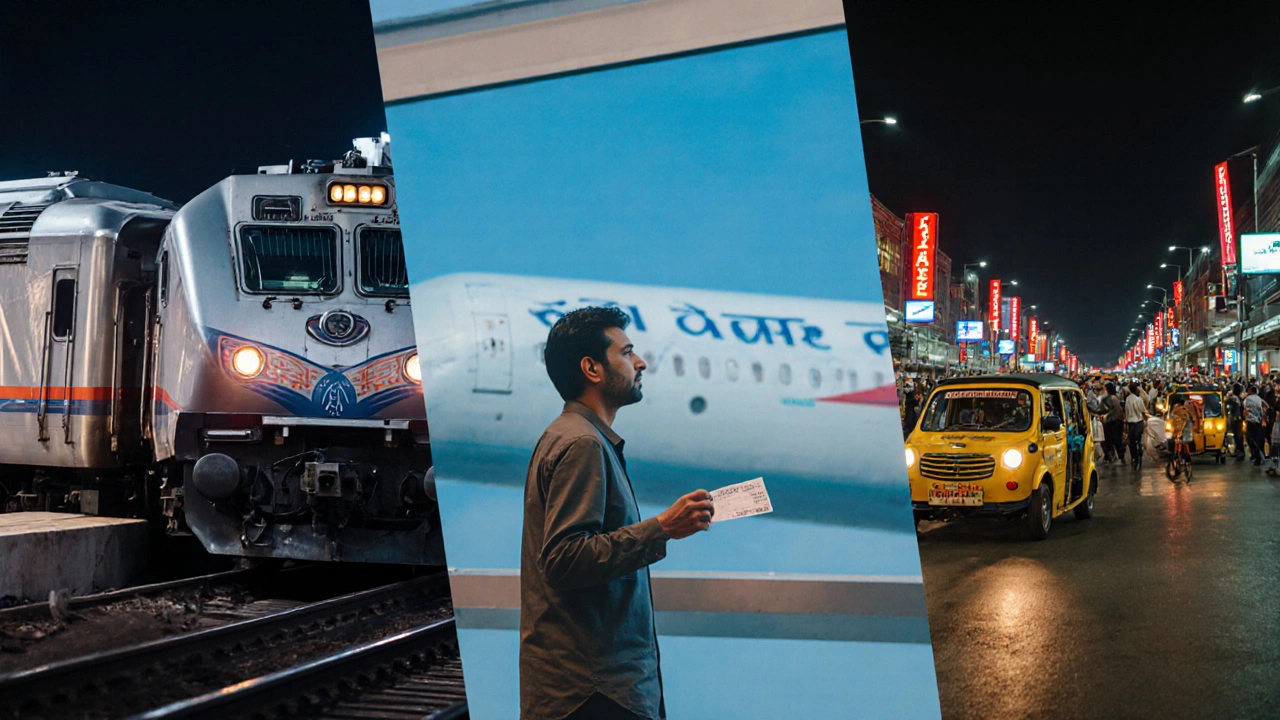
Food: Delicious Savings
India’s culinary scene is a budget traveler’s dream. Street vendors sell everything from pani puri to vada pav for $1‑3 USD. If you prefer a sit‑down meal, a decent thali (plate) at a mid‑range restaurant costs $5‑8 USD. Upscale restaurants charge $15‑30 USD for a three‑course meal.
Pro tip: Eat where locals eat. A small stall near a railway station often offers fresher, safer food than the tourist‑centric eateries that charge a premium.
Hidden Costs & How to Avoid Them
- Travel insurance: Not mandatory, but a $30‑50 USD policy for a two‑week trip protects against medical emergencies and canceled flights.
- Visa fees: e‑tourist visa for most nationalities costs $25‑40 USD, plus a $10 USD processing surcharge.
- ATM withdrawal fees: Indian banks charge about $2‑4 USD per withdrawal. Use cards that waive foreign fees to keep costs low.
- Tour guide tips: Tipping is customary - $2‑5 USD per day for a guide, $1‑2 USD for drivers.
By planning ahead and budgeting for these line items, you won’t be surprised by a sudden spike in expenses.
Sample Two‑Week Itinerary for a $35 USD Daily Budget
- Day 1‑3: Delhi
- Stay in a hostel dorm ($7)
- Visit Red Fort, Chandni Chowk, and Lotus Temple (public transport $1)
- Street‑food breakfasts ($2)
- Day 4‑6: Jaipur
- Take an overnight train ($15 for AC sleeper)
- Budget guesthouse ($12 per night)
- Explore Amber Fort, Hawa Mahal (entry fee $5 total)
- Day 7‑10: Goa
- Fly low‑cost carrier from Jaipur to Goa ($50 total if booked early)
- Beachside hostel dorm ($8)
- Eat at beach shacks ($3‑4 per meal)
- Rent a scooter for $5 per day
- Day 11‑14: Mumbai
- Train from Goa to Mumbai ($12)
- Shared room in a boutique hostel ($10)
- Visit Gateway of India, Elephanta Caves (ferry $3)
- Final shopping at Colaba Causeway (keep a $20 souvenir budget)
This plan stays under $35 USD per day, covering transport, lodging, food, and entry fees. Adjust the hostel type or skip a few paid attractions to squeeze even more savings.
When India Might Feel Expensive
If you’re used to budget travel in Southeast Asia, a few aspects of India could feel pricier:
- Domestic flights, especially during peak festival seasons like Diwali, can skyrocket to $120‑150 USD.
- Luxury accommodations in high‑end resort zones (e.g., Kerala backwaters) often start at $200 USD per night.
- Traveling in the far north (Leh‑Ladakh) adds the cost of permits and pricey jeep tours, which can be $80‑120 USD per day.
But those are optional upgrades - you can still have an unforgettable trip without paying them.
Top Tips to Stretch Your Money in India
- Travel off‑season: October‑March sees lower hotel rates and fewer crowds.
- Use train sleeper classes: They’re comfortable, safe, and cost a fraction of a flight.
- Eat local: Street food and dhabas (roadside eateries) give authentic flavors for pennies.
- Book accommodations with kitchen access: Cooking a few meals saves $5‑10 USD daily.
- Negotiate prices: For taxis, souvenir stalls, and even hostel upgrades, a polite “Can you do $X?” often works.
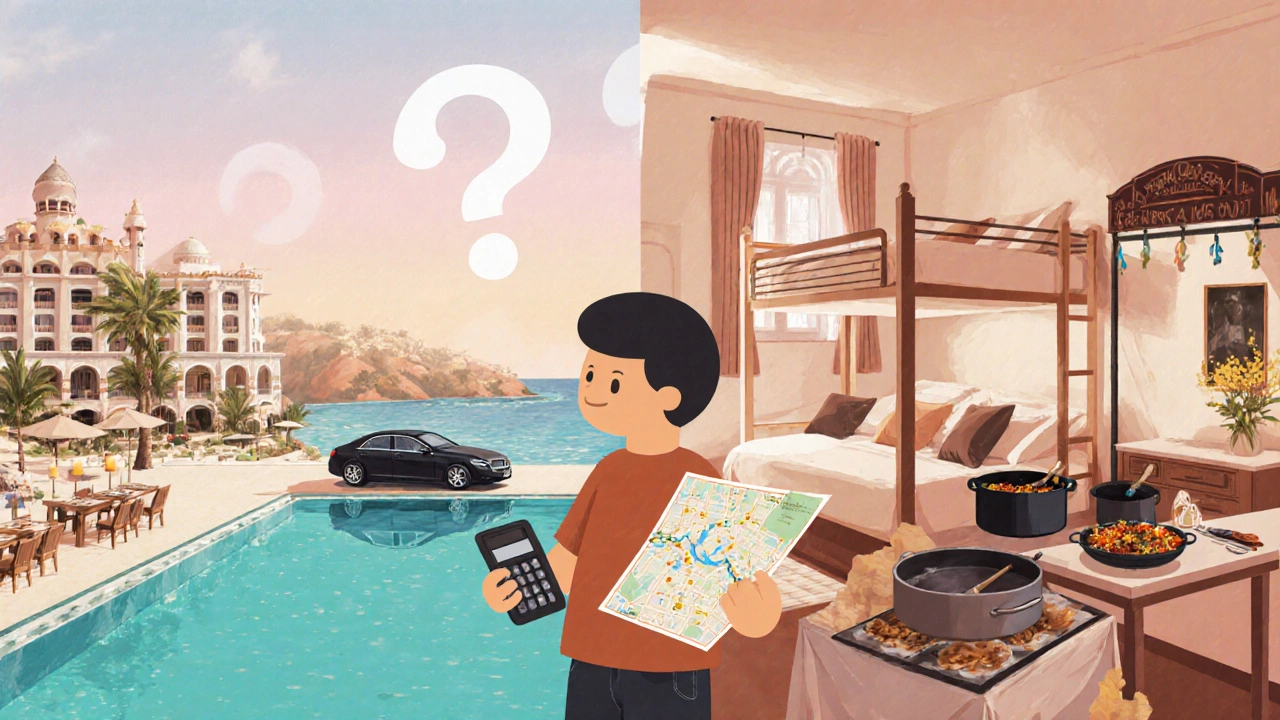
Conclusion: Is India Expensive?
Short answer: Not for most travelers. Whether you’re a backpacker on $20‑day or a mid‑range explorer at $60‑day, India delivers massive value. Only the luxury tier pushes the spend into “expensive” territory, and even then the price per experience is low compared with Western destinations.
Plan your budget, pick the right cities, and use the tips above - you’ll discover that India can be as cheap or as classy as you make it.
How much does a daily budget of $30 cover in India?
With $30 you can stay in a hostel dorm, eat three street‑food meals, use local buses or auto‑rickshaws, and visit a few free attractions. It’s enough for a comfortable backpacker day in cities like Delhi, Jaipur, or Goa.
Is it cheaper to travel by train or by low‑cost flight?
For distances under 800 km, trains are usually cheaper (₹500‑₹1500 vs $30‑$70 for a flight). For longer hops (e.g., Delhi‑Bangalore), a low‑cost carrier can be competitive if you book weeks in advance.
Do I need travel insurance for an India trip?
It’s not mandatory, but a $30‑$50 policy covering medical emergencies and trip cancellations is worth the peace of mind, especially if you plan adventure activities like trekking or motorbike rides.
What are the best budget cities for first‑time visitors?
Delhi, Jaipur, Goa, and Varanasi offer a mix of cheap lodging, affordable meals, and iconic sights. They each have good train connections, making it easy to hop between them without spending a fortune.
How can I avoid ATM fees while in India?
Use a debit card that waives foreign transaction fees and withdraw larger sums (₹5,000‑₹10,000) to keep per‑withdrawal charges low. Some banks also partner with Indian banks for fee‑free withdrawals.
